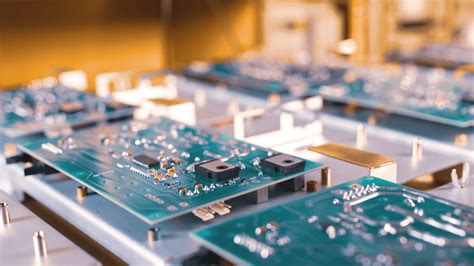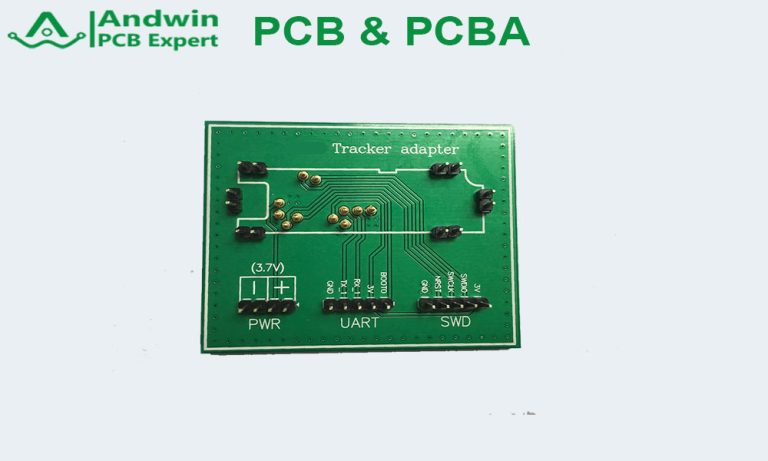Revolutionizing BPL PCB Manufacturing: Quality and Innovation Unleashed
Key Takeaways
In the evolving landscape of BPL PCB manufacturing, you will find that understanding the major innovations is essential for staying competitive. The intersection of technology and practices plays a crucial role in enhancing efficiency and quality. For instance, many PCB manufacturing companies are now adopting automated processes that minimize human error and increase production speed. These automation technologies significantly impact pcb manufacturing cost, leading to reduced overhead while simultaneously elevating the consistency of output. Furthermore, advanced materials are being utilized to improve durability and functionality, enabling a range of applications that were previously unattainable. As you explore this sector, you’ll notice how these innovations not only drive efficiency in your pcb manufacturing business but also set new benchmarks in quality control, ensuring that the products meet international standards. This focus on innovation fosters a culture where continuous improvement is paramount, ultimately benefiting both manufacturers and consumers alike.
Introduction to BPL PCB Manufacturing: A New Era of Innovation
As you delve into the world of BPL PCB manufacturing, it is evident that we are witnessing a significant shift towards a new era characterized by innovation and enhanced quality. The evolution of pcb manufacturing techniques has opened up numerous opportunities for pcb manufacturing companies aiming to elevate productivity and efficiency standards. With the continuous integration of advanced technologies, you will find processes that were once labor-intensive becoming streamlined through automation and precision engineering. This shift not only affects the pcb manufacturing cost but also ensures that high-quality outputs are consistently delivered, setting a benchmark within the industry. Exploring this landscape, it becomes clear that the strategies implemented in your pcb manufacturing business can profoundly impact competitiveness and growth in a fast-evolving market. The emphasis on both quality and innovation will be critical as you navigate these changes, enabling your operations to meet customer demands while adhering to international standards.
The Role of Technology in Enhancing PCB Quality
In the rapidly evolving world of BPL PCB manufacturing, technology plays a pivotal role in enhancing the overall quality of printed circuit boards. You will find that advanced manufacturing techniques are not merely about speeding up processes; they are fundamentally changing the way pcb manufacturing companies assess and improve their products. By integrating state-of-the-art machinery and innovative software solutions, these companies can monitor every stage of production with unprecedented precision. This allows for real-time adjustments, ensuring that any discrepancies are addressed immediately before they escalate into larger issues.
For those in the pcb manufacturing business, understanding how technology impacts quality control is essential. Utilizing automated inspection systems, designers can enforce stricter quality standards while reducing pcb manufacturing costs associated with defects and rework. Moreover, leveraging data analytics means that you can extract insights from production data, leading to continual improvement and consistently high-quality output.
“Investing in technology is no longer optional; it’s a necessity for staying competitive in the PCB landscape.”
This new era also encourages collaboration between various stakeholders—from engineers to suppliers—which fosters a culture of innovation driven by shared expertise. In this environment, quality assurance becomes ingrained within the production processes rather than tacked on as an afterthought, ultimately setting new benchmarks for what consumers can expect from BPL PCB manufacturing products.
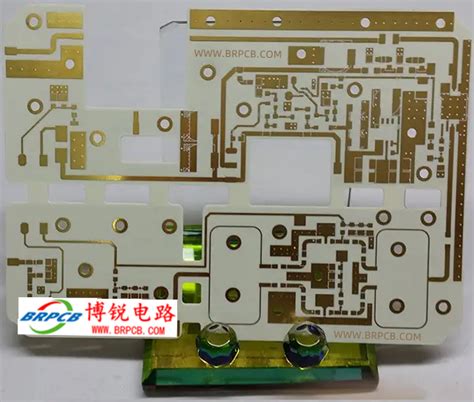
Innovative Practices Driving Efficiency in BPL PCB Production
In the realm of BPL PCB manufacturing, innovative practices play a pivotal role in enhancing operational efficiency and reducing costs. As you delve into the practices adopted by leading PCB manufacturing companies, you will notice a significant shift towards automation and advanced software solutions. These technologies not only streamline production but also ensure that the PCB manufacturing cost is kept in check, allowing businesses to remain competitive. With the increasing complexity of designs, companies are embracing practices such as design for manufacturability (DFM), which focuses on simplifying the manufacturing process while maintaining high quality. Furthermore, implementing real-time monitoring systems can significantly enhance productivity by identifying bottlenecks instantly, resulting in a smooth workflow. As you explore these groundbreaking approaches, it becomes clear that a commitment to innovation is essential for any PCB manufacturing business seeking to thrive in a rapidly evolving market environment. The integration of these innovative practices ensures that quality is never compromised while achieving maximized efficiency across all stages of production.
Key Advancements Reshaping the BPL PCB Manufacturing Landscape
In the rapidly evolving realm of BPL PCB manufacturing, several key advancements are driving the transformation of the industry. First and foremost, cutting-edge technology has played a significant role in enhancing both production efficiency and product quality. With the adoption of automated processes, you’re witnessing a reduction in human error, which ultimately lowers the pcb manufacturing cost. Furthermore, innovations such as advanced materials and design software have enabled pcb manufacturing companies to create more complex and reliable circuits than ever before.
Another noteworthy advancement is the implementation of stringent quality control measures, which significantly improve the overall standard of products distributed in the market. These practices ensure that each stage of production is meticulously monitored, leading to a decrease in waste and an increase in performance reliability. Additionally, environmentally friendly manufacturing options are becoming increasingly popular, as businesses strive to meet consumer demand for sustainable practices while still maintaining competitiveness in the pcb manufacturing business.
As these advancements continue to reshape the landscape, it’s vital for companies operating within this sector to embrace innovation actively. By doing so, they not only improve their internal processes but also enhance their position within a competitive marketplace that increasingly prioritizes quality over quantity. Keeping abreast of these developments will empower you to make informed decisions that align with industry standards and consumer expectations.
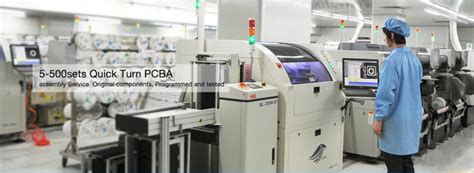
Setting New Standards in Quality Control for PCBs
In the ever-evolving world of pcb manufacturing, maintaining high standards of quality control is crucial for success. Companies that focus on quality control not only improve their reputation but also enhance the reliability of their products. As you delve into the intricacies of pcb manufacturing companies, you’ll discover that they have adopted innovative techniques to monitor and verify the quality at every stage of production. Modern technology plays a pivotal role; advanced tools such as automated inspection systems and real-time data analytics help identify defects early in the process, minimizing waste and reducing pcb manufacturing cost. This shift to precision-driven methodologies ensures that every circuit board meets stringent specifications, thereby setting new benchmarks in the industry.
Moreover, by implementing systematic testing protocols, these companies are not only ensuring compliance with industry standards but are also fostering a culture of continuous improvement. This focus on quality is essential for maintaining competitiveness in the pcb manufacturing business landscape. As a result, organizations that prioritize robust quality control measures are positioned to attract more clients and generate greater value, effectively revolutionizing the pcb manufacturing sector. The synergy between innovation and quality control is simplifying complex processes, making it easier for you to understand how these advancements not only help fulfill current market needs but also pave the way for future growth.
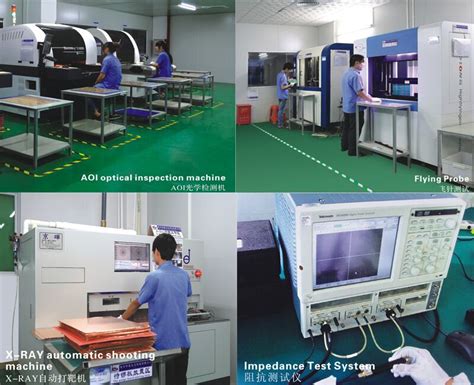
Case Studies: Successful Implementation of Advanced Manufacturing Techniques
In the realm of PCB manufacturing, several pioneering companies have begun to reshape the landscape by adopting advanced manufacturing techniques that enhance both efficiency and quality. One notable example is a PCB manufacturing business that integrated automation into their production lines. By employing robotics to manage repetitive tasks, they significantly reduced PCB manufacturing costs, allowing for a larger output while maintaining exceptional quality standards. This case highlights how innovation not only streamlines operations but also fosters a culture of continuous improvement among employees.
Another compelling case study involves a group of PCB manufacturing companies that collaborated on a shared technology platform. This partnership facilitated knowledge-sharing and resource optimization, leading to improved production rates and reduced downtimes. By leveraging data analytics, they were able to predict maintenance needs before issues arose, thereby minimizing disruptions in the manufacturing process. Such collaboration exemplifies how the industry can benefit from innovative practices that capitalize on collective expertise.
Additionally, one company implemented real-time quality inspection systems powered by artificial intelligence. This advancement allows them to monitor production in real-time, ensuring any defects are identified and rectified immediately. As a result, they have achieved an impressive reduction in waste and rework costs, underscoring the positive impact of high-tech solutions on quality assurance within PCB manufacturing.
These case studies illustrate that the successful implementation of advanced techniques not only enhances operational efficiency but also sets new benchmarks for quality in PCB manufacturing. As you explore these innovations further, consider how such practices could transform your own engagements with this dynamic industry.
Future Trends in BPL PCB Manufacturing: What to Expect
As you look toward the future of BPL PCB manufacturing, several key trends are poised to reshape the landscape of this sector. One significant trend is the integration of smart manufacturing technologies, including automation and artificial intelligence, which can enhance productivity and reduce pcb manufacturing cost. These technologies streamline processes, allowing you to glean real-time data and insights, ultimately improving your decision-making in pcb manufacturing businesses.
Additionally, sustainability is becoming increasingly crucial in the industry. More pcb manufacturing companies are adopting eco-friendly materials and practices to minimize waste and energy consumption. By implementing green technologies, you will not only be compliant with regulatory demands but also appeal to a growing consumer base that values responsible production methods.
The advancement of materials science is another critical area to watch. The development of innovative materials that offer better performance characteristics can elevate the quality of your products significantly. For instance, next-generation substrates could provide higher thermal and electrical performance, thereby enhancing your competitive edge in BPL PCB production.
Here’s a simple table summarizing these trends:
| Trend | Impact on PCB Manufacturing |
|---|---|
| Smart Manufacturing Technologies | Increases productivity; lowers costs |
| Sustainability | Reduces waste; appeals to eco-conscious consumers |
| Advanced Materials | Enhances product quality; improves competitiveness |
As these trends unfold in the BPL PCB sector, staying ahead will require an adaptive mindset focused on innovative practice and improved quality measures. Engaging with these advancements now will better position you for success in an evolving market landscape.
Conclusion: The Impact of Quality and Innovation on the Industry
In the rapidly evolving world of BPL PCB manufacturing, the emphasis on quality and innovation is reshaping the landscape for pcb manufacturing companies. You recognize that integrating advanced technologies leads to enhanced precision and reliability, aspects that are crucial in ensuring that your products meet high standards. The continuous pursuit of excellence in pcb manufacturing not only drives down the pcb manufacturing cost but also fosters a competitive edge, allowing your business to thrive in a saturated market. Furthermore, innovative practices implemented in your pcb manufacturing business can significantly impact production efficiency, reducing waste while maintaining high output levels. As these advancements take hold, you can expect a marked transformation in operational processes and customer satisfaction. In this context, quality control becomes paramount; it’s not just about meeting expectations but exceeding them through stringent measures and smart technologies. The influence of these innovations will undoubtedly dictate the future trajectory of the industry, compelling every player to adapt or risk obsolescence. Keeping pace with these changes will enable you to harness their benefits fully and lead your organization into a prosperous era of PCB manufacturing excellence.
Conclusion: The Impact of Quality and Innovation on the Industry
As you navigate the ever-evolving realm of BPL PCB manufacturing, it becomes clear that the synergy between quality and innovation is pivotal in shaping the future of this industry. The advancements in technology have transformed how pcb manufacturing companies approach their processes, allowing for enhanced quality control and reduced pcb manufacturing cost. By integrating cutting-edge practices, you can optimize your pcb manufacturing business to meet the increasingly stringent demands of global markets. The focus on delivering high-quality products not only elevates your reputation but also drives efficiency, thereby fostering a competitive edge. As you look ahead, recognize that embracing innovation is not just a choice—it is a necessity for staying relevant in a landscape where pcb manufacturing evolves rapidly, setting new standards that promote excellence and nurture sustainability.
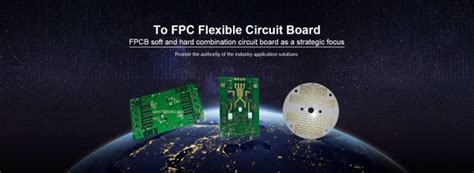
FAQs
What is BPL PCB manufacturing?
BPL PCB manufacturing refers to the process of producing printed circuit boards (PCBs) using advanced techniques and technologies that enhance quality and efficiency. It emphasizes innovative practices to meet the demands of modern electronics.
What should I consider when evaluating PCB manufacturing companies?
When assessing PCB manufacturing companies, you should consider factors such as their reputation, quality control processes, technology used, production capacity, and the specific requirements of your project. Ensuring they adhere to industry standards is crucial.
How does technology impact PCB manufacturing cost?
Technology plays a significant role in determining pcb manufacturing cost. Advanced machinery can streamline processes and reduce waste, ultimately leading to lower production costs. However, initial investment in such technologies can be high.
What are the key challenges in the PCB manufacturing business?
The PCB manufacturing business faces several challenges including evolving technology standards, environmental regulations, and maintaining consistent quality amidst competition. Addressing these challenges requires continual innovation and adaptation.
How has quality control evolved in BPL PCB manufacturing?
Quality control in BPL PCB manufacturing has evolved significantly with automated testing methods and sophisticated software tools that help identify defects early in the production process, ensuring higher reliability and performance of PCBs.
For more insights into enhancing your understanding of PCB manufacturing, please click here: Andwin PCB Manufacturing.


